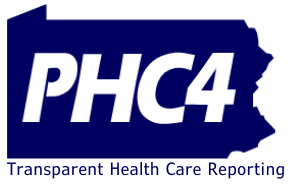Contact: Joe Martin
717-232-6787 or
Drug Withdrawal in Newborns Increases More Than 1,000%.
Harrisburg, PA – March 28, 2018 – The Pennsylvania Health Care Cost Containment Council (PHC4) released a new research brief today showing that the rate of newborns suffering from drug withdrawal increased more than 1,000% between FYs 2000-2001 and FYs 2016-2017. Referred to as Neonatal Abstinence Syndrome (or NAS), this array of problems develops shortly after birth in newborns who were exposed to addictive drugs, most often opioids, while in the motherâs womb. Withdrawal signs develop because these newborns are no longer exposed to the drug for which they have become physically dependent.
Specifically, PHC4âs research found that the rate of hospital stays for newborns with NAS increased 1,096%âfrom 1.2 per 1,000 newborn hospitalizations to 15.0.
In FY 2017, there were 1,912 NAS-related newborn stays in Pennsylvania. While there was evidence of maternal substance use in a larger number of newborns, not all developed withdrawal signs. NAS was diagnosed in 58% of the newborn stays involving maternal substance use that year.
âThis brief provides more examples of the alarming impact the opioid crisis has had on Pennsylvania familiesâand, specific to these findings, babies,â said Joe Martin, PHC4âs executive director.
Newborns with NAS typically required more days in the hospital and were much more likely to suffer from complications compared to all other newborns. The average hospital stay for newborns with NAS was 17.1 days compared to 3.5 days for all other newborn stays. This difference accounted for an additional 26,018 days in the hospital for babies with NAS.
NAS babies were more likely to have low birth weight, prematurity, difficulty feeding, and respiratory distress compared to all other newborn stays.
| Complication | NAS Newborn Stays | All Other Newborn Stays |
|---|---|---|
| Low birth weight | 15.7% | 6.6% |
| Prematurity | 14.8% | 8.1% |
| Difficulty feeding | 14.9% | 3.5% |
| Respiratory distress | 24.0% | 9.3% |
Other findings showed that:
- NAS-related hospitalizations added an estimated $14.1 million in hospital payments.
- Medicaid was the anticipated payer for 86.9% of NAS-related hospitalizations.
- NAS rates were highest among white, non-Hispanic newborns, occurring at a rate of 19.5 per 1,000 newborn hospitalizations. The rate for black, non-Hispanic newborns was 7.2.
- NAS rates varied by income. Rates were highest (at 19.2 per 1,000 hospitalizations) for newborns from neighborhoods with median household incomes in the range of $40,000 to
The brief also includes county-level NAS rates.
The brief is available on PHC4’s website at www.phc4.org. You can also link to it through social media on Facebook and Twitter.
PHC4 is an independent state agency charged with collecting, analyzing and reporting information that can be used to improve the quality and restrain the cost of health care in Pennsylvania.

